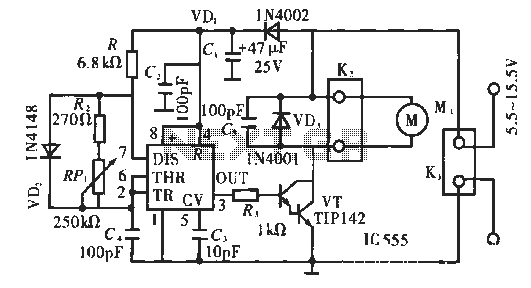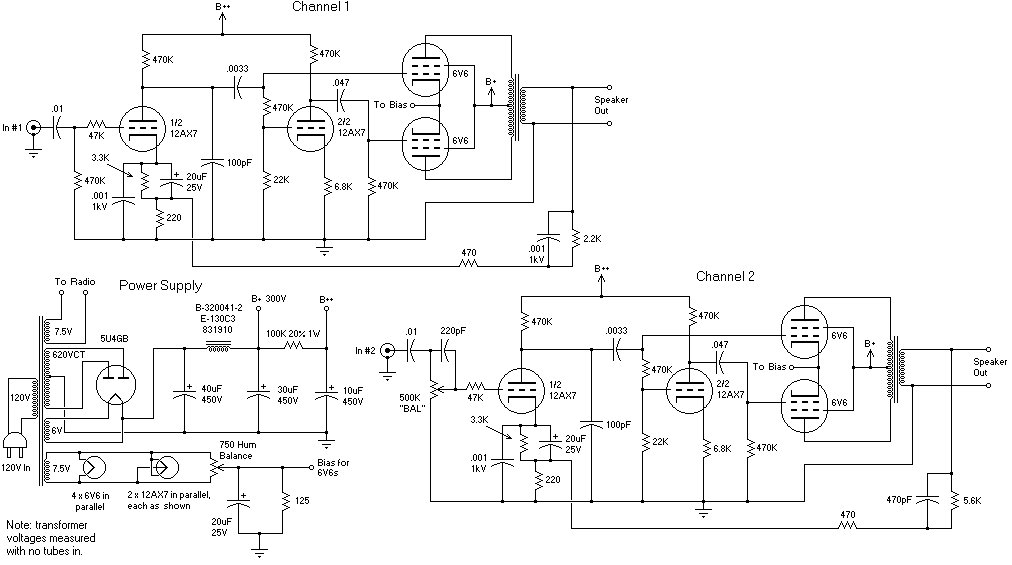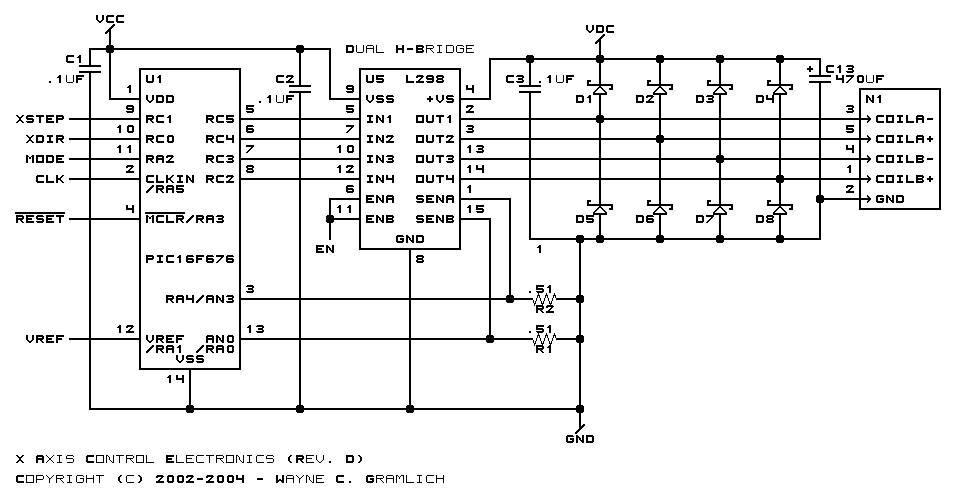
PWM DC motor speed control circuit

The circuit operates using pulse position modulation, which is a method distinct from the more commonly utilized pulse width modulation for speed control. A 555 timer is employed as a square wave modulator, generating output pulses with a fixed width of 0.5 ms, determined by the resistance and capacitance time constant. Consequently, the electric motor is activated for a duration of 0.5 ms with each pulse, which is generally adequate to initiate motor operation.
The circuit utilizes a 555 timer in astable mode, configured to generate a continuous square wave output. In this configuration, the output frequency and duty cycle are determined by the external resistors and capacitor connected to the timer. The fixed pulse width of 0.5 ms is achieved through careful selection of these components, allowing for precise control over the timing characteristics of the output signal.
The output from the 555 timer is fed into a transistor (VT), which acts as a switch to control the power delivered to the motor. When the output pulse from the 555 timer goes high, the transistor is turned on, allowing current to flow to the motor for the duration of the pulse. This brief activation is sufficient to start the motor, as it provides the necessary torque to overcome initial inertia.
In applications where pulse position modulation is preferred, this circuit design can offer advantages such as reduced electromagnetic interference and improved efficiency in motor control. The use of a fixed pulse width simplifies the design and can enhance reliability in various operating conditions. Additionally, further enhancements can be made by integrating feedback mechanisms to adjust the pulse frequency or width dynamically, allowing for more responsive motor control based on load conditions.
Overall, this circuit exemplifies a straightforward yet effective approach to motor control using pulse position modulation, leveraging the capabilities of the 555 timer and a transistor switch to achieve desired operational outcomes.Circuit works: At present, although the most commonly used method is to pulse width modulation speed, but the circuit is a pulse position modulation (when known as pulse modulation). Manifold 555 in here to pick a square wave modulator 3 feet output pulse width is fixed 0.5 ms (by the R., C. The time constant). Thus, the duration of each pulse through the VT the electric machine is turned on 0.5 ms. Most of this time is sufficient to start the motor.
The circuit utilizes a 555 timer in astable mode, configured to generate a continuous square wave output. In this configuration, the output frequency and duty cycle are determined by the external resistors and capacitor connected to the timer. The fixed pulse width of 0.5 ms is achieved through careful selection of these components, allowing for precise control over the timing characteristics of the output signal.
The output from the 555 timer is fed into a transistor (VT), which acts as a switch to control the power delivered to the motor. When the output pulse from the 555 timer goes high, the transistor is turned on, allowing current to flow to the motor for the duration of the pulse. This brief activation is sufficient to start the motor, as it provides the necessary torque to overcome initial inertia.
In applications where pulse position modulation is preferred, this circuit design can offer advantages such as reduced electromagnetic interference and improved efficiency in motor control. The use of a fixed pulse width simplifies the design and can enhance reliability in various operating conditions. Additionally, further enhancements can be made by integrating feedback mechanisms to adjust the pulse frequency or width dynamically, allowing for more responsive motor control based on load conditions.
Overall, this circuit exemplifies a straightforward yet effective approach to motor control using pulse position modulation, leveraging the capabilities of the 555 timer and a transistor switch to achieve desired operational outcomes.Circuit works: At present, although the most commonly used method is to pulse width modulation speed, but the circuit is a pulse position modulation (when known as pulse modulation). Manifold 555 in here to pick a square wave modulator 3 feet output pulse width is fixed 0.5 ms (by the R., C. The time constant). Thus, the duration of each pulse through the VT the electric machine is turned on 0.5 ms. Most of this time is sufficient to start the motor.





